The Dragon Rope Fish, also known as the Rope Eel, is closely related to Polypterus fish and is not a “true” eel due to its pair of pectoral fins. Despite its unique appearance, Rope Fish is relatively easy to care for if provided with the right environment and diet. They are calm, peaceful, and hardy, making them suitable for aquarists of all experience levels.
Table of Contents
Introduction To Dragon Rope Fish
The Dragon Rope Fish, also known as the African Ropefish or Reedfish, is a unique and fascinating freshwater species. Resembling a cross between a snake and an eel, this fish has captured the interest of aquarium enthusiasts around the world.
With its long, serpentine body and attractive rope-like markings, the Dragon Rope Fish stands out among other fish species. It is native to Africa and can be found in slow-moving rivers, swamps, and floodplains. While it may not be the easiest fish to care for, its distinctive appearance and interesting behaviors make it a popular choice for experienced fish keepers.
Overview Of Their Unique Characteristics And Appearance
The Dragon Rope Fish possesses several distinctive characteristics that set it apart from other freshwater fish species. Here are some notable features:
- Elongated Body: The Dragon Rope Fish has a long and slender body that can grow up to three feet in length. Its flexible body allows it to move gracefully through the water, resembling the movements of a snake.
- Rope-Like Markings: One of the most eye-catching aspects of the Dragon Rope Fish is its unique markings. It features dark vertical stripes or lines that resemble ropes, giving it its name. These markings run along the length of its body, creating an intriguing visual pattern.
- Prehensile Fin: Unlike most fish, the Dragon Rope Fish has a prehensile fin on its lower jaw. This specialized adaptation allows it to grasp objects in the aquarium and provide stability while swimming.
- No Scales: Another distinctive characteristic of the Dragon Rope Fish is its lack of scales. Instead, it has a smooth, slimy skin that helps it glide through the water more efficiently.
- Delicate Fins: The Dragon Rope Fish has delicate, thread-like fins that span the length of its body. These fins add to its graceful swimming motion and contribute to its overall unique appearance.
- Coloration: While the Dragon Rope Fish typically has a dark brown or black coloration, it can vary depending on its environment and mood. Some individuals may exhibit lighter or reddish tones, adding even more visual interest.
The Dragon Rope Fish is a captivating freshwater species with its elongated body, rope-like markings, and delicate fins. Its unique appearance makes it a remarkable addition to any aquarium.
Setting Up The Ideal Tank For Dragon Rope Fish
Setting up the ideal tank for Dragon Rope Fish requires careful consideration of tank mates, diet, size, and other factors. Providing the proper environment and diet is essential for the care of these unique fish.
Dragon Rope Fish (also known as Reedfish or Snakefish) require specific tank conditions to thrive. Creating the perfect environment for these unique and captivating creatures involves careful consideration of tank size, equipment selection, and aquascaping. In this section, we will discuss the essential steps to set up an ideal tank for Dragon Rope Fish.
Choosing The Right Tank Size And Dimensions
The size of the tank plays a crucial role in providing a comfortable space for your Dragon Rope Fish. Here are some points to consider when choosing the right tank size:
- Opt for a tank that is at least 75 gallons or larger. Dragon Rope Fish can grow up to 18 inches long and require ample swimming space.
- Ensure the tank has a minimum length of 48 inches to accommodate the rope-like body of these fish.
- Consider the height of the tank as Dragon Rope Fish are known to be excellent jumpers. A taller tank with a secure lid is recommended to prevent escapades.
Selecting Appropriate Equipment For The Tank
To maintain the health and well-being of your Dragon Rope Fish, it’s important to choose the right equipment for their tank. Here are some essential items to consider:
- Filter: A high-quality filter is necessary to remove waste and maintain water quality. Opt for a canister filter or a powerful hang-on-back filter suitable for the size of your tank.
- Heater: Dragon Rope Fish prefer water temperatures between 72°F and 82°F. Install a reliable heater with a built-in thermostat to ensure a consistent temperature.
- Lighting: Rope Fish are nocturnal creatures, so providing dim lighting replicates their natural habitat. Consider using low-intensity LED lights or a moonlight setting to create a suitable environment.
Creating The Perfect Environment For Dragon Rope Fish
Aquascaping plays a crucial role in replicating the natural habitat of Dragon Rope Fish. Here are some tips to create the perfect environment:
- Substrate: Choose sand or small-sized gravel as substrate to mimic the riverbeds where these fish are found.
- Plants: Dragon Rope Fish appreciate dense vegetation, so include live plants such as Anubias, Java Fern, or Amazon Sword. These plants also provide hiding spots for the fish.
- Décor: Add driftwood, rocks, and caves to the tank to create hiding places and territories for your Dragon Rope Fish.
- Water conditions: Maintain water with a pH level between 6.0 and 7.0 and ensure it is soft to moderately hard. Regular water changes are necessary to keep the water parameters stable.
By following these guidelines for tank size, equipment selection, and creating the perfect environment, you will provide your Dragon Rope Fish with a comfortable and thriving habitat.
Providing Optimal Care For Dragon Rope Fish
Provide optimal care for your Dragon Rope Fish with our comprehensive guide. Learn about their tank mates, diet, size, and more to ensure a healthy and thriving fish in your aquarium.
Understanding The Dietary Requirements Of Dragon Rope Fish:
- Dragon Rope Fish are carnivorous and require a protein-rich diet.
- They primarily eat live or frozen foods such as small fish, shrimp, and worms.
- It is important to vary their diet to ensure they receive all the necessary nutrients.
- Feeding them a combination of high-quality pellets and live/frozen foods is ideal.
- Avoid feeding them insects or reptiles as it can lead to nutritional deficiencies.
Feeding Techniques And Recommended Food Sources:
- Dragon Rope Fish are slow eaters, so it’s important to be patient when feeding them.
- Feed them smaller portions multiple times a day rather than one large meal.
- Use a feeding stick or tweezers to offer live or frozen foods directly in front of them.
- Recommended food sources include bloodworms, brine shrimp, daphnia, and small fish.
- It’s crucial to ensure the food is of appropriate size to prevent choking or digestive issues.
Maintaining Water Quality And Conducting Regular Water Changes:
- Dragon Rope Fish require a well-maintained aquarium with clean water.
- Regular water changes of 25% to 30% every two weeks are essential.
- Monitor the water parameters regularly, including ammonia, nitrite, and nitrate levels.
- Use a reliable water test kit to ensure the water quality is within the acceptable range.
- Invest in a good filtration system to keep the water clean and free from toxins.
Monitoring And Managing The Tank’S Temperature And Ph Levels:
- Dragon Rope Fish thrive in a tropical freshwater environment with a temperature range of 75°F to 82°F (24°C to 28°C).
- Maintain a pH level between 6.5 and 8.0 for optimal health.
- Use a reliable aquarium thermometer to monitor the temperature regularly.
- PH levels can be adjusted using a pH buffer or specific chemicals designed for fish tanks.
- Fluctuations in temperature and pH can stress and harm the fish, so it’s crucial to maintain stability.
Remember, providing optimal care for Dragon Rope Fish is essential for their health and well-being. Understanding their dietary requirements, feeding techniques, water quality, and tank maintenance will help create a thriving aquarium environment for these fascinating fish.
Ensuring Compatibility With Tank Mates
Ensuring compatibility with tank mates is crucial when keeping a Dragon Rope Fish. Proper research should be conducted to find suitable companions that can coexist peacefully in the same tank.
Compatible Tank Mates For Dragon Rope Fish
When it comes to creating a harmonious community tank, choosing the right tank mates for your Dragon Rope Fish is essential. You want to ensure compatibility to avoid potential aggression issues and conflicts. Here are some compatible tank mates for your Dragon Rope Fish:
- Corydoras Catfish: These small, peaceful fish are bottom-dwellers and make great companions for your Dragon Rope Fish. They also help keep the tank clean by scavenging for food scraps.
- African Butterflyfish: Known for their beautiful patterns and peaceful temperament, African Butterflyfish can coexist peacefully with Dragon Rope Fish. Just make sure to provide plenty of hiding spots and floating plants for them.
- Guppies: These colorful and active fish are known for their adaptability and peaceful nature. They make great tank mates for Dragon Rope Fish and add a pop of color to your aquarium.
- Swordtails: With their long flowing tails and peaceful demeanor, Swordtails are a great addition to your Dragon Rope Fish tank. They thrive in similar water conditions and are unlikely to compete or show aggression.
- Clown Loaches: These playful and social fish can coexist peacefully with Dragon Rope Fish, as long as they are kept in a spacious tank with plenty of hiding spots and hiding places.
- Tetras: Small and peaceful, tetra fish can add a dynamic and lively element to your Dragon Rope Fish tank. Neon tetras or cardinal tetras are popular choices and can create a stunning visual display.
Remember, it’s important to observe your tank mates to ensure they are getting along and not stressing each other out. If you notice any signs of aggression or compatibility issues, it’s best to separate them or rearrange the tank to reduce conflicts.
Providing ample hiding spots, territories, and a well-balanced diet can help establish a harmonious community in your tank.
Breeding Dragon Rope Fish
Breeding Dragon Rope Fish is a fascinating task that requires careful attention. These unique creatures, closely related to eels, are relatively easy to care for and can be managed by aquarists of all levels of experience. Providing the proper environment and diet is essential for successful breeding.
Understanding The Breeding Behavior Of Dragon Rope Fish:
- Dragon Rope Fish, also known as Reedfish or Snakefish, are visually stunning and captivating freshwater species that many aquarists are interested in breeding.
- Understanding their breeding behavior is essential to increase the chances of successful breeding.
- Here are some key points to understand about the breeding behavior of Dragon Rope Fish:
- Breeding usually occurs in the early morning or late evening.
- Males are known to engage in courtship behaviors, such as entwining their bodies with the female.
- The breeding process can be triggered by raising the water temperature and providing suitable hiding spots and vegetation in the aquarium.
Creating The Ideal Breeding Conditions:
- Creating the ideal breeding conditions is crucial in encouraging the breeding behavior of Dragon Rope Fish. Consider the following:
- Maintain a water temperature between 75°F and 82°F, as this simulates the natural breeding conditions for these fish.
- Provide ample hiding spots and dense vegetation in the aquarium, as these mimic their natural habitat and encourage spawning.
- Ensure good water quality by performing regular water changes and monitoring the ammonia and nitrate levels.
- Dim the aquarium lighting, as bright lights can disrupt their breeding behavior and stress the fish.
Caring For The Eggs And Fry During The Breeding Process:
- Once the Dragon Rope Fish have successfully spawned, it is vital to provide proper care for the eggs and fry. Here’s what you need to know:
- Dragon Rope Fish are known to be diligent parents and will guard their eggs and fry.
- If you notice eggs in the aquarium, it is best to separate them from the adults and transfer them to a separate breeding tank.
- The eggs typically hatch within 5 to 10 days, depending on the water temperature.
- Fry should be fed small live or frozen foods, such as baby brine shrimp or finely crushed flakes, multiple times a day.
- Ensure the breeding tank has suitable water conditions, including clean water and proper filtration.
- Monitor the fry closely and remove any sick or injured individuals to prevent the spread of diseases.
Remember, successfully breeding Dragon Rope Fish requires careful attention to their specific breeding behaviors and creating the ideal conditions for them. With proper knowledge and dedication, you can enjoy the rewarding experience of breeding these unique and fascinating fish in your home aquarium.
Common Health Issues And Disease Prevention
The Dragon Rope Fish, a unique aquatic species, requires careful consideration of health issues and disease prevention. With proper care, including tank mates, diet, and size considerations, this captivating fish can thrive in a freshwater aquarium. Aquarium enthusiasts in Austin, Texas, and beyond can find comprehensive care guides for the Dragon Rope Fish online.
Identifying Common Health Issues In Dragon Rope Fish:
- Fin rot: This is a bacterial infection that causes the fins to deteriorate or rot. It can be identified by ragged or discolored fins.
- Ich: Also known as white spot disease, ich is a common parasitic infection. It presents as white spots on the fish’s body and gills.
- Dropsy: Dropsy is a condition characterized by the swelling of the fish’s body due to the accumulation of fluid. It is often a symptom of an underlying disease or infection.
- Swim bladder disorder: This disorder affects the fish’s ability to regulate buoyancy. Affected fish may have difficulty swimming upright or may float upside down.
- External parasites: Rope fish are susceptible to external parasites such as anchor worms and fish lice. These parasites can cause irritation and skin damage.
Preventive Measures To Maintain Their Overall Health And Well-Being:
- Maintain water quality: Regularly check water parameters such as temperature, pH, ammonia, and nitrite levels. Perform regular water changes to keep the water clean and suitable for the fish.
- Provide proper nutrition: Offer a balanced diet consisting of high-quality pellets, frozen or live foods. Avoid overfeeding, as it can lead to obesity and various health issues.
- Quarantine new fish: Before introducing new fish to the tank, quarantine them in a separate tank for a few weeks to monitor their health and minimize the risk of introducing diseases to the existing fish.
- Avoid tank overcrowding: Rope fish require ample space to swim and hide. Avoid overcrowding the tank, as it can lead to stress and increased aggression among the fish.
- Regular observation: Monitor your rope fish regularly for any signs of illness or abnormal behavior. Early detection can help prevent the spread of diseases and facilitate prompt treatment.
Treating Common Diseases And Ailments:
- Use appropriate medication: Depending on the specific health issue, consult a veterinarian or aquatic specialist to determine the suitable medication for treating diseases such as fin rot, ich, or dropsy.
- Isolate affected fish: If a specific fish is infected with a contagious disease, it is essential to isolate it to prevent the spread of the infection to other tank mates.
- Improve water conditions: In cases of swim bladder disorder, improving water quality and providing appropriate water parameters can help alleviate the symptoms.
- Use parasite treatments: In the case of external parasites, follow the instructions on suitable parasite treatments to eliminate them from the tank. Repeat the treatment as necessary to ensure complete eradication.
- Maintain a stress-free environment: Stress can weaken the immune system of fish, making them more susceptible to diseases. Ensure the tank environment is suitable with adequate hiding spots and a peaceful cohabitation of tank mates.
Remember, to maintain the overall health and well-being of your Dragon Rope Fish, regular monitoring, proper nutrition, and prompt treatment of any health issues are essential. By following preventive measures and providing suitable care, you can help keep your rope fish happy and healthy.
Conclusion
Rope fish, also known as dragon rope fish, are fascinating creatures that add a unique touch to any aquarium. Despite their dragon-like appearance, rope fish are relatively easy to care for and can be enjoyed by aquarists of all experience levels.
These calm and peaceful fish are hardy and can thrive in the proper environment. When it comes to tank mates, it’s important to choose peaceful species that won’t intimidate or harm the rope fish. Their diet consists of live or frozen foods, and they can even be trained to eat pellets or flakes.
As for size, rope fish can grow up to three feet long, so it’s important to provide them with a large tank. With proper care, these underwater dragons can live for many years, bringing joy and fascination to their owners.
So, if you’re looking to add a unique and captivating fish to your freshwater aquarium, consider the dragon rope fish.
Frequently Asked Questions On Dragon Rope Fish
Is A Rope Fish An Eel?
No, a rope fish is not an eel, but they are closely related to Polypterus fish. Rope eels have pectoral fins, which true eels do not have. They are relatively easy to care for with the right environment and diet.
Are Rope Fish Hard To Take Care Of?
Rope fish are not hard to take care of. They are calm, peaceful, and hardy fish.
Can Rope Fish Live Out Of Water?
No, rope fish cannot live out of water for a long period of time.
Can Dragon Fish Live With Other Fish?
Dragon fish, also known as rope fish, can live with other fish as long as they are non-aggressive and of similar size.
Sure, here are 20 FAQs on Dragon Rope Fish, with the FAQ marked down as H3 formatting.
What is a Dragon Rope Fish?
The Dragon Rope Fish (Erpetoichthys calabaricus) is a unique and unusual freshwater fish species native to West Africa. It is known for its elongated, rope-like body and dragon-like appearance.
How big do Dragon Rope Fish get?
Dragon Rope Fish can grow up to 3-4 feet (90-120 cm) in length, although they are typically smaller in home aquariums.
Are Dragon Rope Fish aggressive?
Dragon Rope Fish are generally not aggressive towards other fish, but they can be territorial towards their own species or similar-looking fish. They may also become more aggressive during breeding periods.
What are the ideal water parameters for Dragon Rope Fish?
Dragon Rope Fish thrive in soft, acidic water conditions with a pH range of 6.0 to 7.0, a temperature between 72°F to 82°F (22°C to 28°C), and low water hardness.
Do Dragon Rope Fish need a lot of swimming space?
Yes, Dragon Rope Fish require a large aquarium with plenty of open swimming areas due to their elongated body shape. A minimum tank size of 150 gallons is recommended for a single fish.
Are Dragon Rope Fish hardy fish?
Dragon Rope Fish are not considered hardy fish and are sensitive to poor water conditions, stress, and changes in their environment.
What do Dragon Rope Fish eat?
Dragon Rope Fish are carnivores and should be fed a varied diet of live or frozen foods like feeder fish, shrimp, and worms.
Can Dragon Rope Fish live with other fish?
Dragon Rope Fish can be kept with other peaceful, non-aggressive fish of similar size and temperament. However, they may attempt to eat smaller fish that can fit in their mouths.
How can I tell male and female Dragon Rope Fish apart?
It is challenging to distinguish male and female Dragon Rope Fish based on appearance alone. Females may appear slightly thicker in the midsection when carrying eggs.
Do Dragon Rope Fish need special lighting?
Dragon Rope Fish do not require special lighting, but they may benefit from subdued or low lighting conditions to mimic their natural habitat.
Can Dragon Rope Fish be kept in a planted aquarium?
While it is possible to keep Dragon Rope Fish in a planted aquarium, they may uproot or damage plants due to their size and active nature. Sturdy, well-rooted plants are recommended.
How long do Dragon Rope Fish live?
With proper care and ideal water conditions, Dragon Rope Fish can live for 10 to 15 years in an aquarium environment.
Are Dragon Rope Fish peaceful fish?
Dragon Rope Fish are generally peaceful towards other fish species but can be territorial towards their own kind or similar-looking fish.
Do Dragon Rope Fish need a specific type of substrate?
Dragon Rope Fish do not have specific substrate requirements, but a fine sand or smooth gravel substrate is recommended to prevent injury to their elongated bodies.
Can Dragon Rope Fish breed in captivity?
While it is possible for Dragon Rope Fish to breed in captivity, it is challenging and requires precise water conditions, suitable spawning surfaces, and environmental triggers.
What are the signs of a healthy Dragon Rope Fish?
Healthy Dragon Rope Fish should be active swimmers, have a sleek and streamlined body shape, clear eyes, and a good appetite.
How often should I feed Dragon Rope Fish?
Dragon Rope Fish should be fed every 2-3 days, offering as much food as they can consume within a few minutes.
Do Dragon Rope Fish need a lot of water movement?
Dragon Rope Fish appreciate moderate water movement and filtration, but excessive flow can stress them out. Gentle currents and regular water changes are recommended.
Can Dragon Rope Fish be kept in a community tank?
While Dragon Rope Fish can be kept in a community tank, it is generally not recommended due to their large size, specific water requirements, and potential to eat smaller tank mates.
Are Dragon Rope Fish suitable for beginner aquarists?
Dragon Rope Fish are not typically recommended for beginner aquarists due to their demanding care requirements, large tank size needs, and sensitivity to water conditions.
References
Aquarium and Tropical Fish Association (ATA)
National Aquarium Society (NAS)
Ornamental Aquatic Trade Association (OATA)
I am a passionate aquarist with over 30 years of hands-on experience in fishkeeping. My journey began at a young age, collecting fish from the wild and learning through experimentation. Specializing in tropical fish, I bring a deep understanding of the hobby to FishKeepingMadeSimple. The site provides honest, detailed reviews of essential products and accessories to help fellow enthusiasts create the best environments for their fish.

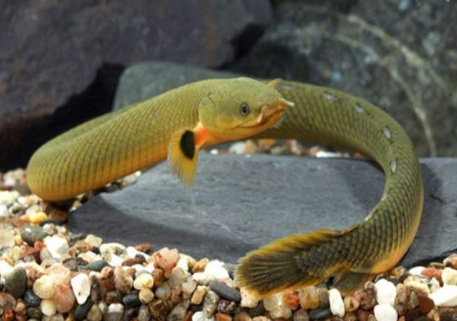
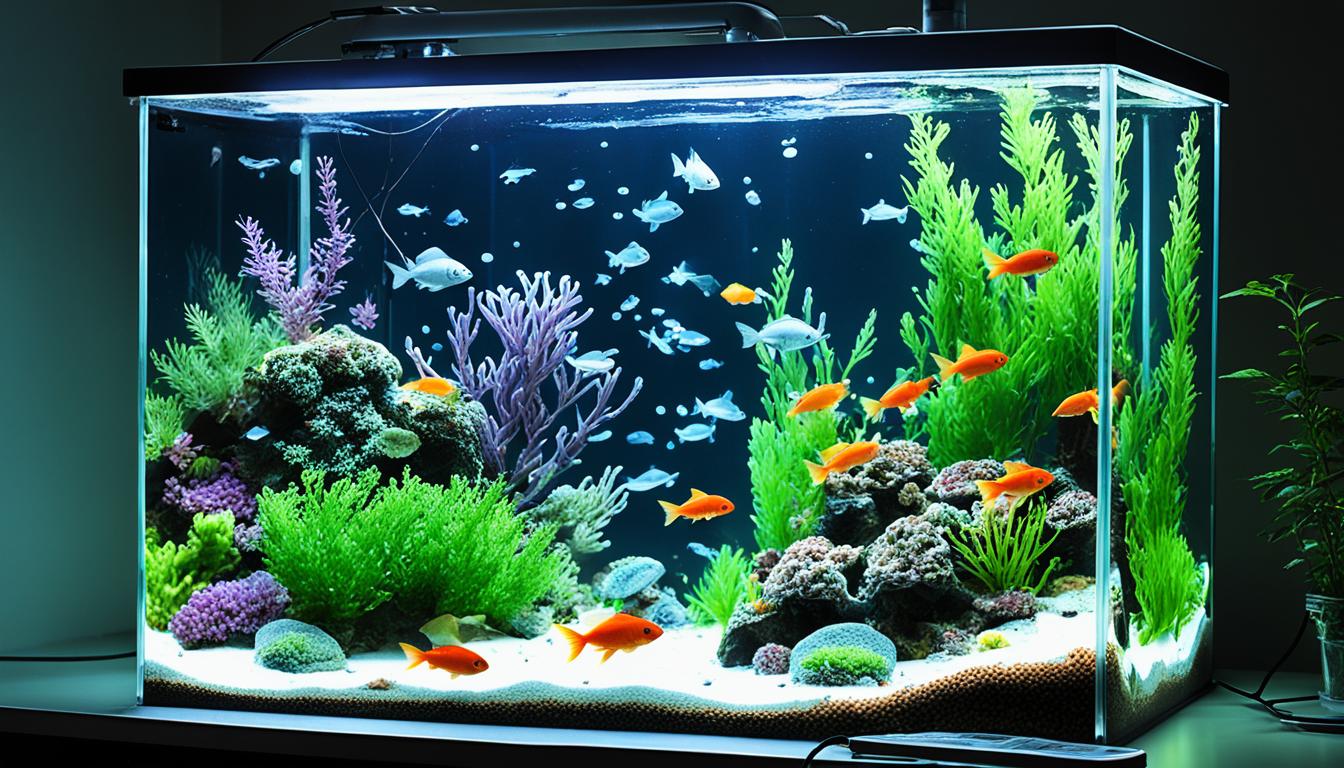
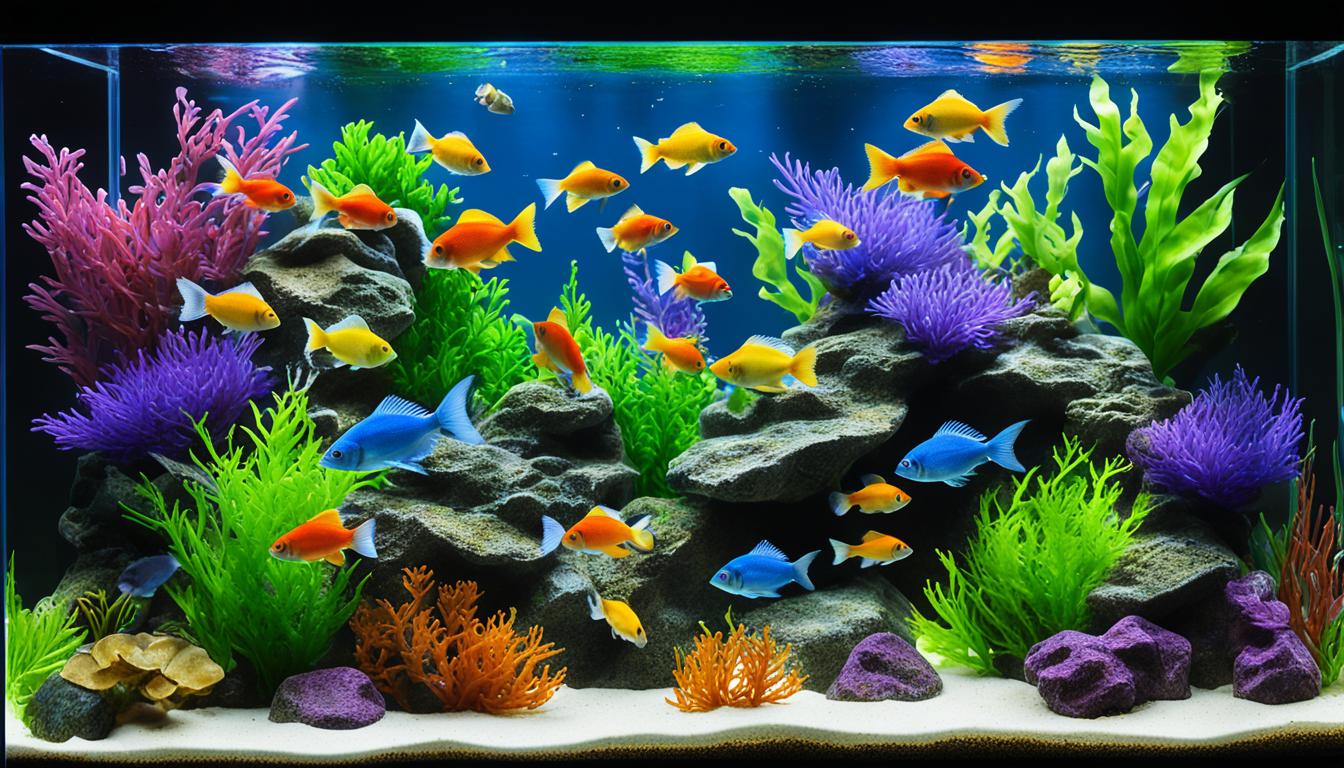






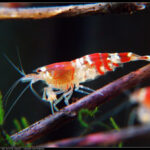
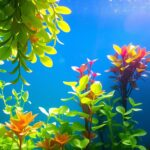
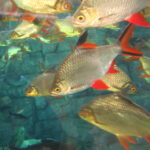
[…] you’re interested in breeding your butterfly koi fish, you’ll need to understand the intricate process and create the ideal conditions for […]
[…] of the most notable features of discus fish is their unique breeding habits. They are caring parents who display impressive parenting instincts, including feeding and […]
[…] ghost knife fish breeding can be an exciting and rewarding experience for aquarists. However, it’s essential to […]
[…] peppermint tetras is an exciting and rewarding experience for many fish enthusiasts. However, it can also be a […]
[…] discus fish are typically more territorial and aggressive during the breeding process, while females tend to be more docile and nurturing. Males may exhibit behavior such as […]